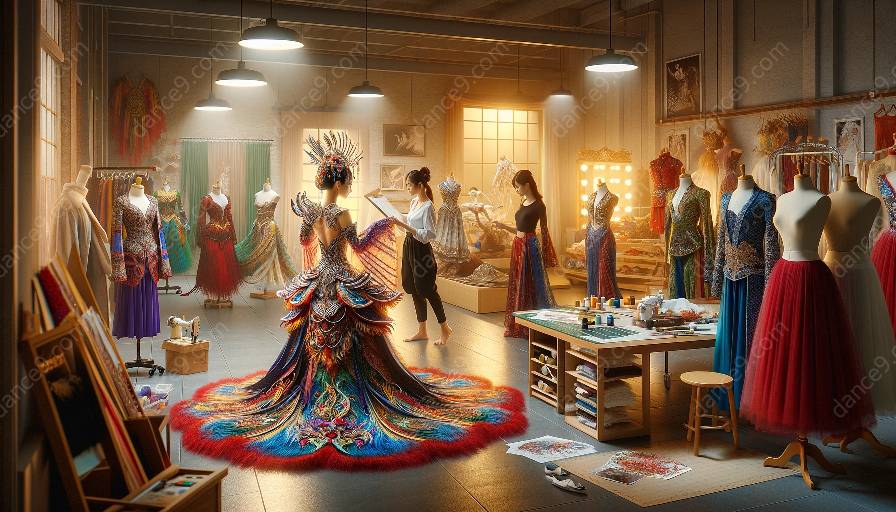Dance performances are a harmonious blend of visual and performative arts, where costume design, lighting, and set design play crucial roles in creating a captivating and immersive experience for the audience.
Costume design in dance is more than just aesthetic appeal; it is a vital component that contributes to the narrative, character portrayal, and movement dynamics on stage. Similarly, lighting and set design serve as powerful tools to enhance the overall ambiance, spatial dynamics, and visual storytelling within a performance.
The Collaboration of Costume Design with Lighting and Set Design
When it comes to integrating costume design with lighting and set design in dance performances, collaboration and synergy are key. The seamless coordination between these three elements can elevate the artistic expression and convey the intended message of the choreography.
Lighting design has the potential to accentuate the details and textures of costumes, creating mesmerizing visual interplays and adding depth to the dancers' movements. By strategically using light and shadow, costume details and colors can be highlighted, further enhancing the emotional impact and visual dynamics of the performance.
Set design also plays a pivotal role in complementing costume design, as it provides the spatial context and visual backdrop against which the dancers' costumes come to life. The synergy between set elements, costumes, and lighting can transport the audience into different worlds and atmospheres, immersing them in the narrative and thematic essence of the performance.
Enhancing Choreographic Elements through Integration
Costume design, lighting, and set design can seamlessly intertwine to emphasize choreographic elements and thematic motifs within a dance performance. When executed thoughtfully, this integration can elevate the emotional depth, storytelling, and symbolic representation embedded in the choreography.
For instance, the strategic use of costume colors and lighting hues can symbolize emotional shifts or thematic contrasts within the dance piece. The harmonious alignment of costume textures with set elements can create visually impactful tableaus and enhance the overall composition of the choreography.
Moreover, the interplay between costume design and lighting effects can transform the stage dynamics, accentuating the dancers' movements and spatial relationships. This integration not only adds visual allure but also enriches the narrative cohesiveness and metaphorical resonance of the performance.
Creative Freedom and Artistic Innovation
Integrating costume design with lighting and set design opens doors for creative freedom and innovative artistic expressions within the realm of dance. It encourages designers and choreographers to explore unconventional juxtapositions, avant-garde concepts, and boundary-pushing visual narratives.
By breaking conventional norms and embracing interdisciplinary collaborations, dance performances can become immersive sensory experiences that blur the lines between visual arts, performance arts, and storytelling. The integration of costume design with lighting and set design serves as a catalyst for reimagining traditional norms and charting new frontiers in the realm of dance aesthetics.
Conclusion
The seamless integration of costume design with lighting and set design in dance performances transcends the boundaries of mere visual appeal; it becomes a multidimensional canvas that enriches the narrative, heightens the emotional resonance, and amplifies the artistic impact of the choreography. Through collaborative innovation and artistic synergy, dancers, costume designers, lighting designers, and set designers can collectively weave a tapestry of visual storytelling that captivates audiences and leaves a lasting impression.











































